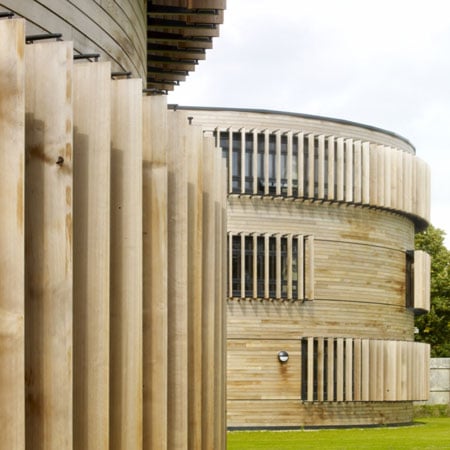
The Langley Academy by Foster + Partners
London architect Foster + Partners have completed an academy clad in wood in Berkshire, UK.
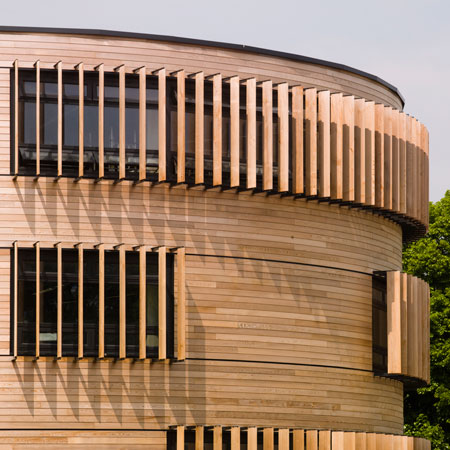
Called The Langley Academy, the project incorporates a three-storey building with a full-height atrium where 1,100 students can assemble.
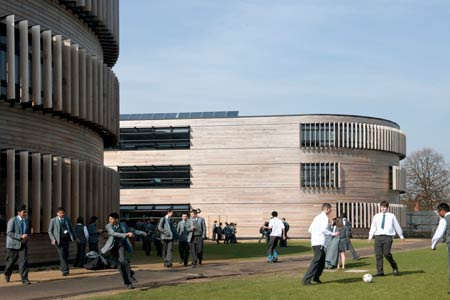
Three yellow, cylindrical, two-storey volumes within this space house science laboratories.
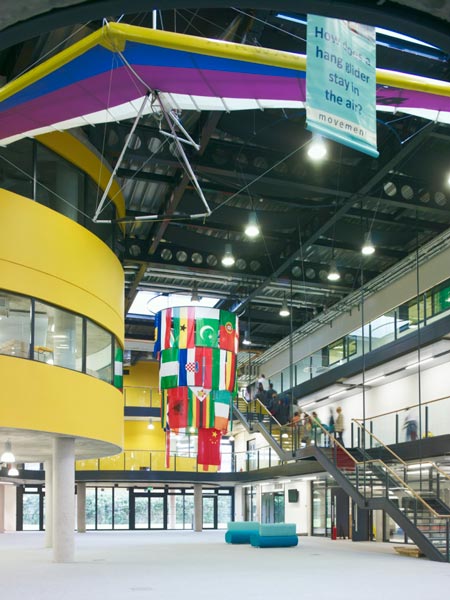
Two arms leading outwards from the atrium are lined with 38 classrooms.
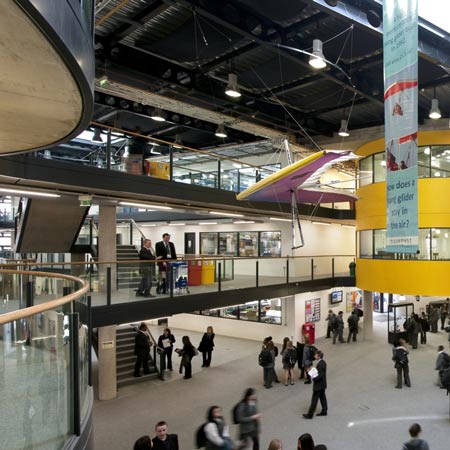
Vertical wooden louvers shade the building.

Students will be educated about science and environmental issues through the visible green features of the building, which include solar collectors, grey-water reuse, and a network of pipes illustrating how energy is collected and carried through the building.
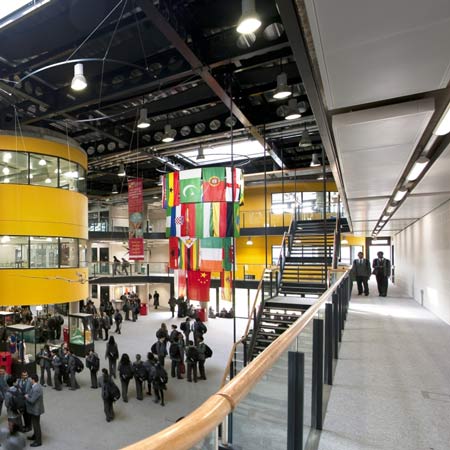
Photographs are by Nigel Young.
Here's some more information from the architects:
--
Official opening for The Langley Academy
The Langley Academy, designed by Foster + Partners, is being officially opened today by Sir Matthew Pinsent CBE. It is an exemplar of sustainable design, a theme which is showcased by the building itself.
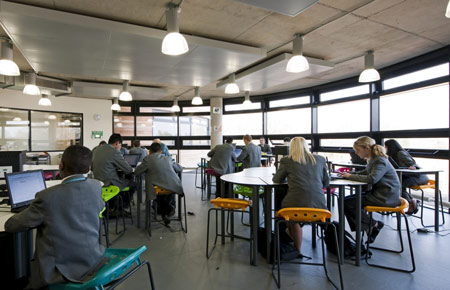
The first academy to specialise in museum learning, it also highlights rowing, cricket and science in its curriculum.
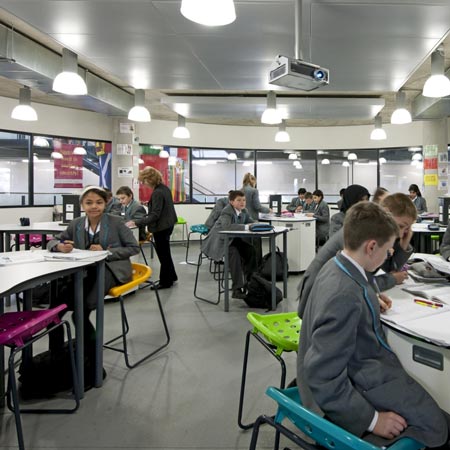
With an enclosed full-height atrium at the heart of the three-storey building, the social life of the school revolves around this assembly space for 1,100 students.
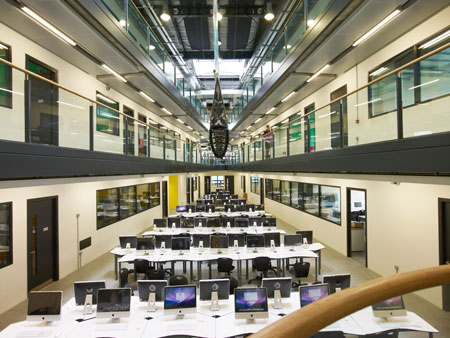
A recurrent element in several other of Foster + Partners’ academy buildings, the atrium is defined by a sense of transparency and openness – like a gallery of learning – which in this case also resonates with the museum theme. Inside the atrium there are three yellow drums raised above the floor on circular columns.
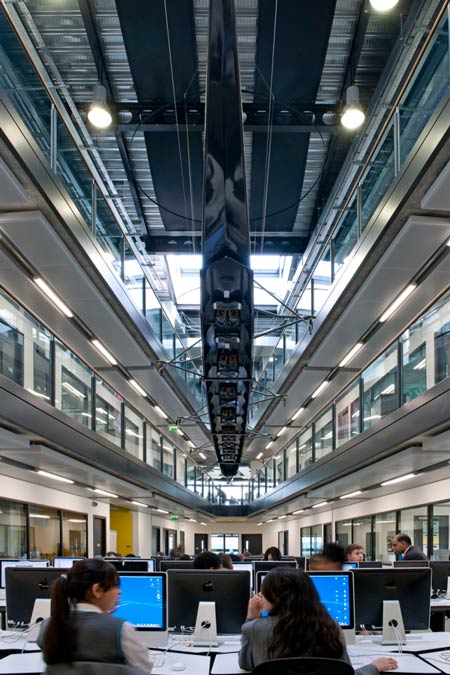
These two-storey pods house the Academy’s ten science laboratories, reinforcing the importance of science teaching.
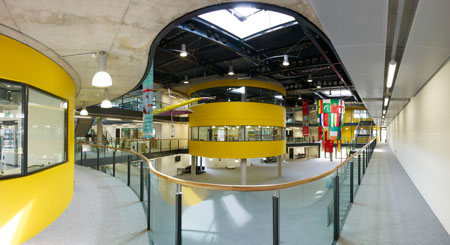
A dedicated sports and culture block contains specialist facilities for music and drama including a fully equipped theatre, a TV and sound recording studio, soundproofed practice rooms and a rehearsal space, sports hall and lecture theatre.
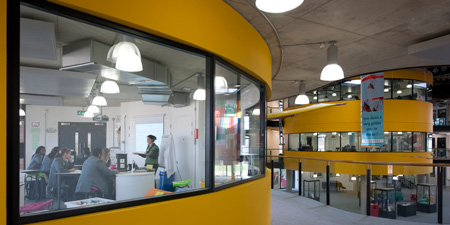
The academy’s two light and airy covered streets extend from the atrium and are lined with 38 classrooms.

The environmental features save 20% in water consumption and approximately 150 tonnes of CO2 per year compared to a traditional academy and are used in the teaching of science and environmental issues.
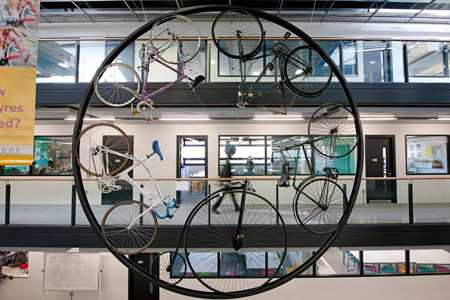
Students can see the solar collectors on the roof and the workings of the exposed plant room, as well as the network of pipes that illustrate how energy is generated and carried through the building.
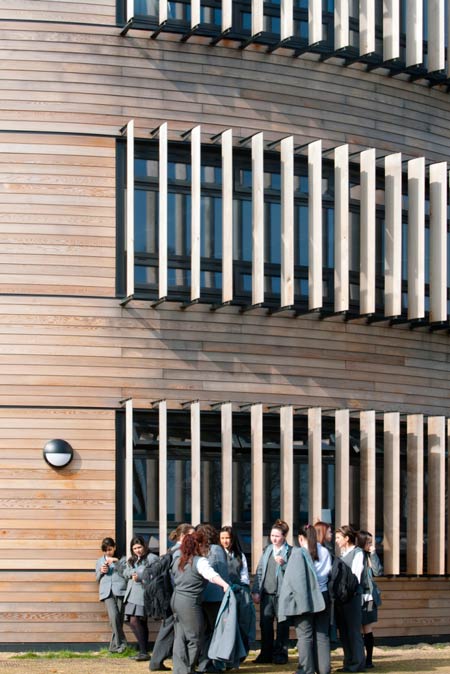
Rain water is collected and stored and grey water filtered for reuse in sanitation and irrigation; a system of horizontal louvers provides shade; and the building has been configured to allow out-of-hours use by the wider community, ensuring its sustainability over time.
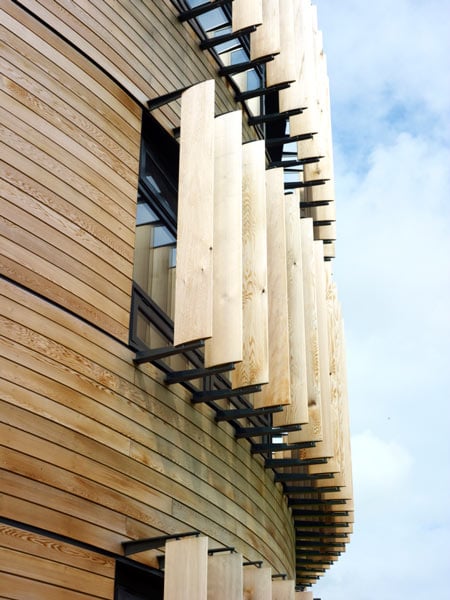
Foster + Partners and Buro Happold collaborated on the environmental design.
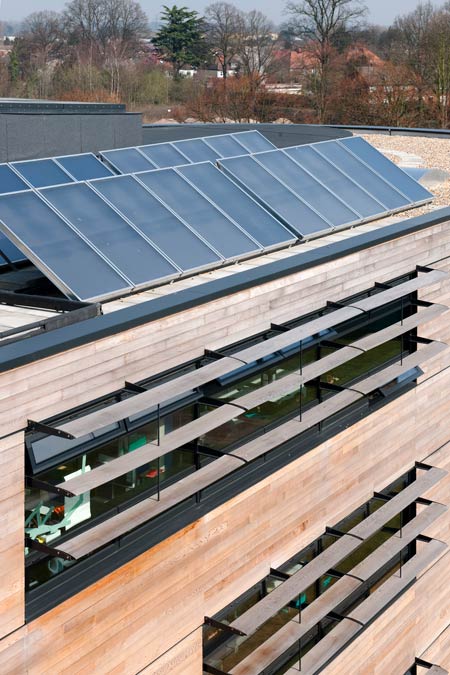
Nigel Dancey, a senior partner and design director at Foster + Partners said:
“Environmental performance and appearance are indivisible at The Langley Academy. The school pioneers a revolutionary new educational concept which draws on the theme of museums and galleries, so that the school itself is like an exhibit, with its physical manifestation a showcase and educational tool for environmental design.”
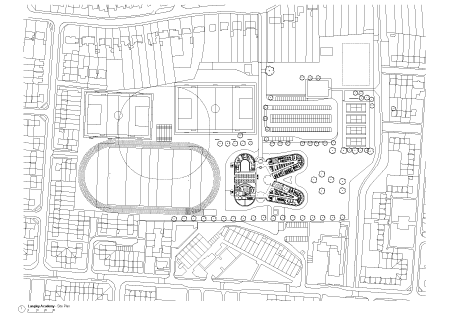
Click for larger image
Museum Learning and the Academy’s Museum
The Langley Academy is the first school in the UK to provide Museum Learning and runs its own Museum. Museum Learning is more than just museum visits.
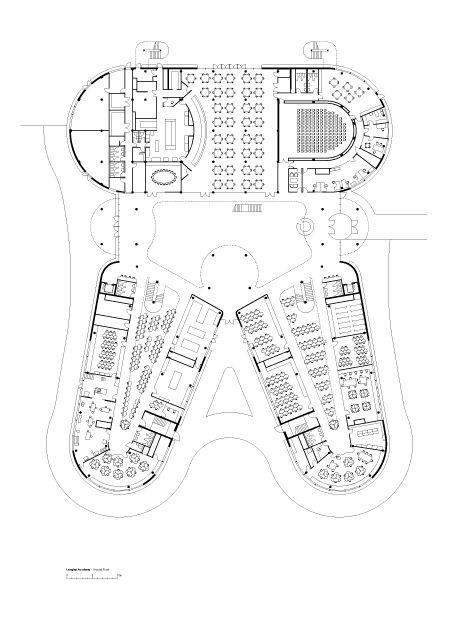
Click for larger image
Ancient artefacts and objects are brought into the classroom to spark questions, debate, analysis and provide connections across the curriculum.
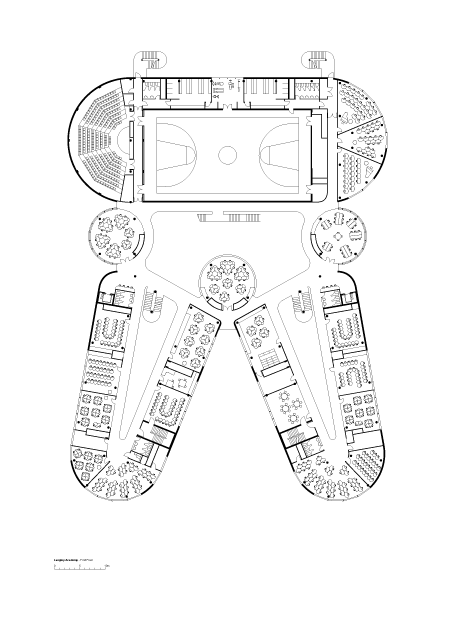
Click for larger image
Museum Learning also provides unparalleled access to significant cultural institutions across the country and the Academy has run 12 museum visits so far this year, involving hundreds of students.
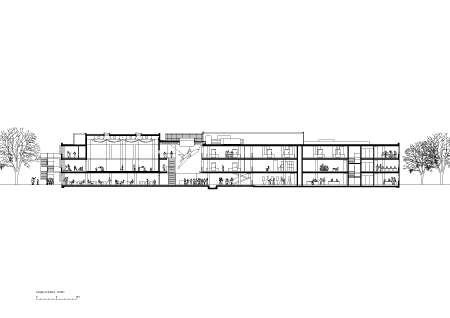
Click for larger image